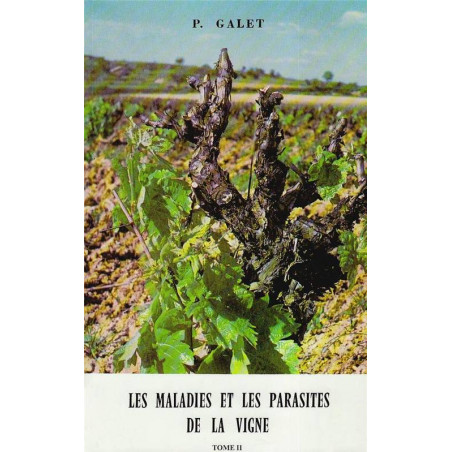



Visa, MasterCard, Amex, Paypal or 3 times, interest-free with Scalapay

0.01€ from 35€ of purchase in France and from 99€ throughout Europe

Delivery in France and around the world at home, at office or in a pickup point

FOREWORDI had initially planned to gather in Volume II The Animal Parasites, Non-Parasitic Diseases, and Phytomedicine, but it turns out that my project was both too optimistic and too ambitious: on one hand, the book would exceed 1,000 pages, which is too much for one volume and the complete realization would require many more months. Therefore, I have decided to publish this year a Volume II, dedicated solely to "Animal Parasites," and to subsequently release a Volume III which will contain Non-Parasitic Diseases and Viticultural Phytomedicine, probably sometime in 1982.Up until now, there was only one detailed work in French, 470 pages long, on Vineyard Insects, written by Valéry MAYET in 1890. Other books on Vine Diseases were much more limited on Animal Parasites: 80 pages in P. VIALA's book (1893), barely forty pages in ARNAUD's book (1931), 120 pages in LAFON and COUILLAUD's book (1970), and around 140 pages in RIBEREAU-GAYON's book (1971).In German, the fundamental work remains F. STELLWAAG's book (1928), which is well-documented and detailed (884 pages), but this book, now hard to find, is over 50 years old, which is quite old for a technical book, especially concerning treatment products.In English, there is no specialized book on vine parasites.I hope that my book can fill this international gap and endure as long as those of my predecessors.For each species, I made sure to thoroughly describe the biology of the different stages: adult, egg, larva, pupa, as rational control can only be effectively planned with a good understanding of the parasite's life cycle that one seeks to eradicate. Similarly, it is important to have maximum information on the favorable circumstances that will influence the parasite's proliferation, not forgetting issues of polyphagy, predators, and the varying susceptibility of vine species and varieties.This extensive study highlights the extraordinary biological potential of parasites, their ability to adapt to unforeseen circumstances, to new chemical products used to combat them, requiring humans to constantly renew their phytosanitary arsenal to keep vine cultivation in good condition or seek a balance between parasites and their predators.In closing, I would like to thank Professor BOUBALS, from the Viticulture Department, who provided me with several personal photos or images, as well as Mr. DALLAS, a technician from the Viticulture Laboratory who created excellent maps and graphics to illustrate this work.Finally, I must not forget to thank the Management and staff of the "Le Paysan du Midi" printing press who provided me with all their assistance in producing this book.Montpellier, April 1, 1981Pierre GALET
Data sheet